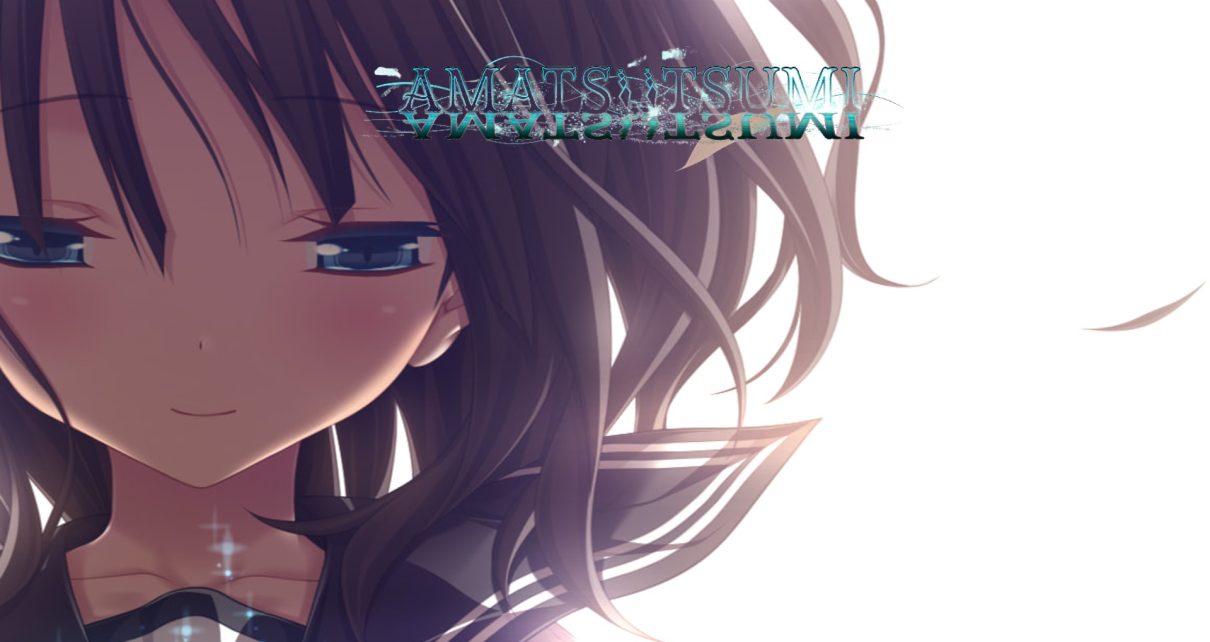Amatsutsumi is the second Purple Software game I’ve played, the first being Chrono Clock. Like Chrono Clock with its time travel watch, Amatsutsumi features a supernatural hook: a command power called Kotodama reminiscent of the geas from Code Geass. Amatsutsumi is an interesting and unusual visual novel. Kotodama runs deeply in the story, which concludes with a powerful main route, but not all the pieces fit together as well as they could.
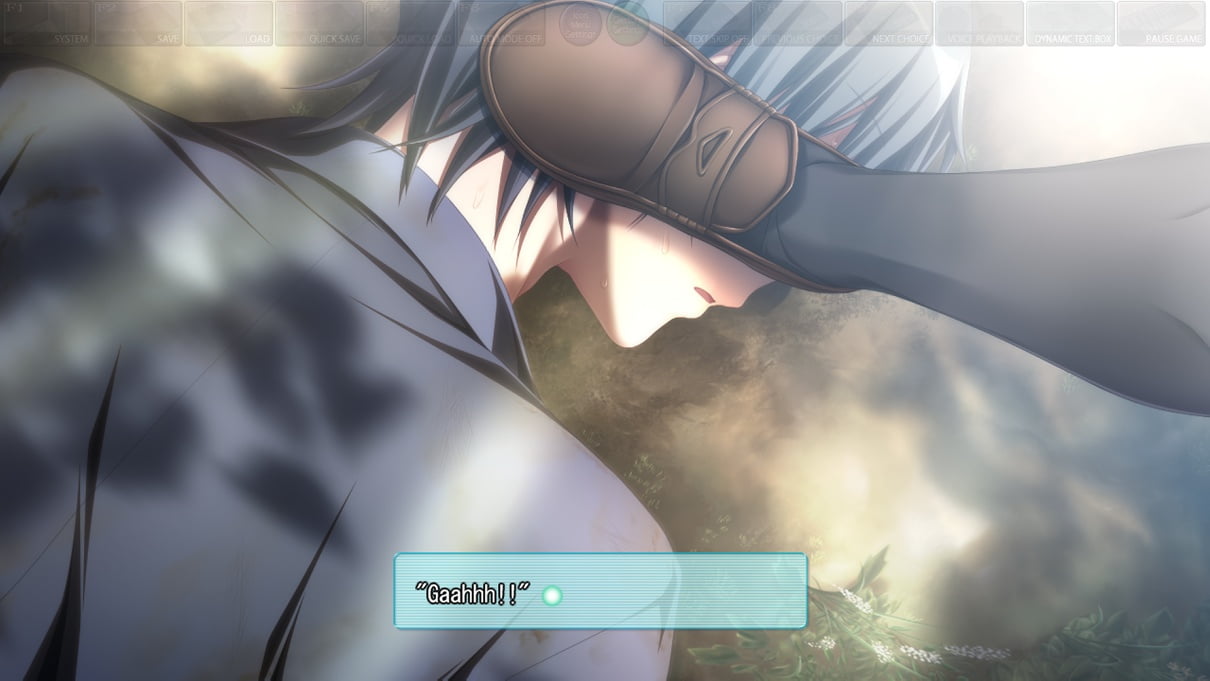
Out of the Silent Village
In an isolated village deep in the mountains dwell the descendants of gods. The people, protagonist Makoto among them, possess an ability called Kotodama that allows them to imbue their spoken words with power. As Makoto explains, anyone who hears a spoken Kotodama is compelled to obey, and the greater the force of the will and emotions of the speaker, the more powerful the effect. The villagers thus live in a restrained silence, speaking only when necessary. However, Makoto hears a voice in his heart: “You must leave.” Whether by this mantra or by his curiosity, a purpose burns within him: to see the world, to speak with others, to feel emotions, to be something more and less than a god. But how can Makoto be anything but a god when only a word stands between him and his every wish, whim, or desire?
Makoto ultimately leaves his village, but lost and unprepared, collapses on the side of the road. He’s saved when a girl named Oribe Kokoro finds him and brings him back to a small town cafe run by her mother. Seeing an opening, Makoto uses his kotodama to convince Kokoro, her mother, and the rest of the townsfolk that he’s Kokoro’s long-lost brother. With a place to stay and a “family” to support him, Makoto is able to begin the normal life he always dreamed of: attending school, making friends, and learning the flavors of human emotions.
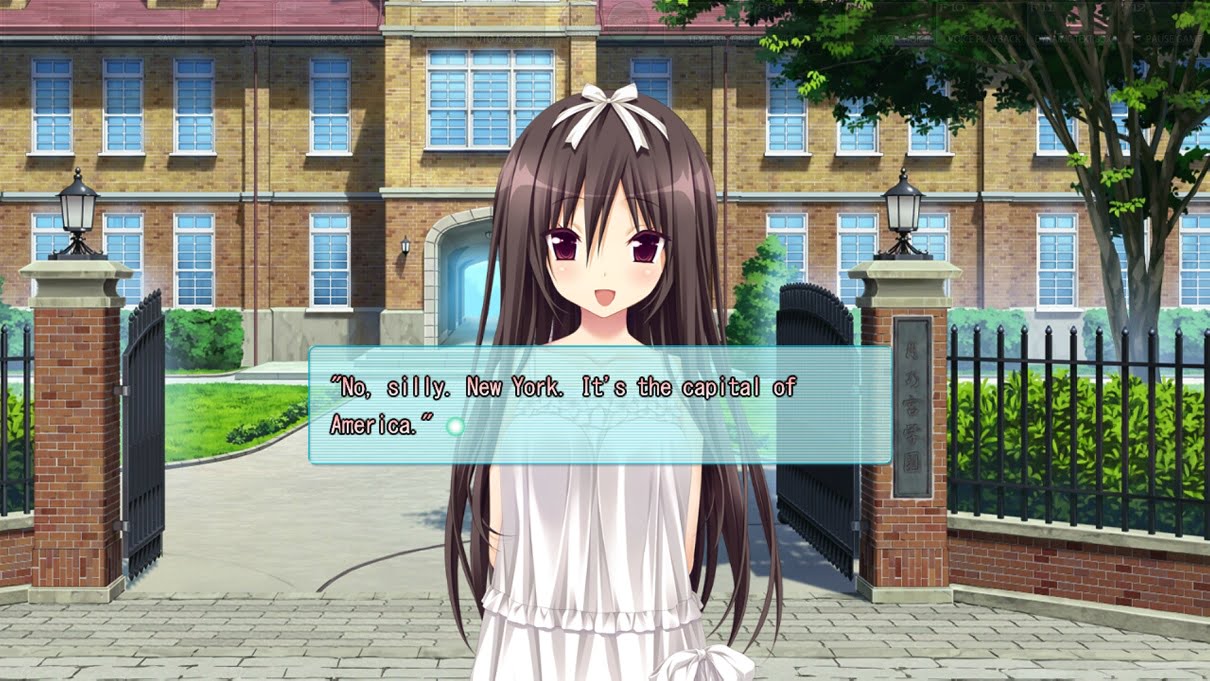
Learning to Live
Amatsutsumi is at heart the story of Makoto’s journey to become human and the people he meets along the way. When he first arrives in town, Makoto speaks kotodamas with barely a thought. If he makes a mistake, he fixes it. If there’s an inconvenience, he irons it out. All by bending those around him to his will. Makoto begins the story dense, blunt, and thoughtless, but it’s believable for someone who spent his life as a silent god. Makoto’s strength as a protagonist is his character growth. As he lives among humans and forms connections, Makoto learns to communicate, have empathy for others, and feel love. Early Makoto can be frustrating at times, but it’s a necessary starting point for a compelling character arc, and by the end Makoto is a strong, thoughtful protagonist.
Kotodama is likewise not simply the ability to issue commands. It quickly becomes clear that the concept runs much deeper. Putting something into words has consequences. It holds the power to create and shape, as well as to end and destroy. The greater the conviction of the speaker, the heavier those consequences weigh. The meaning of Kotodama is something Makoto must learn if he is to face his destiny.
The world of Amatsutsumi holds an aura of mystery, but the storytelling very much takes a big picture approach. I don’t think there are plot holes, but details aren’t always explained. For mundane things, like how Makoto might sneak out of his house at night, it’s not important anyway. I might have wondered for a second or two, but ultimately was happy moving on. For the kotodama, I think this choice is more intentional. Rather than read lore from an infodump, you infer from the kotodamas that are spoken and their significance. (Kotodamas are denoted in the text with angle brackets.) I quite liked this. The ambiguity feels right for a mystical tradition the characters themselves don’t fully understand. Asking you to draw conclusions fits nicely with themes about the significance of language.
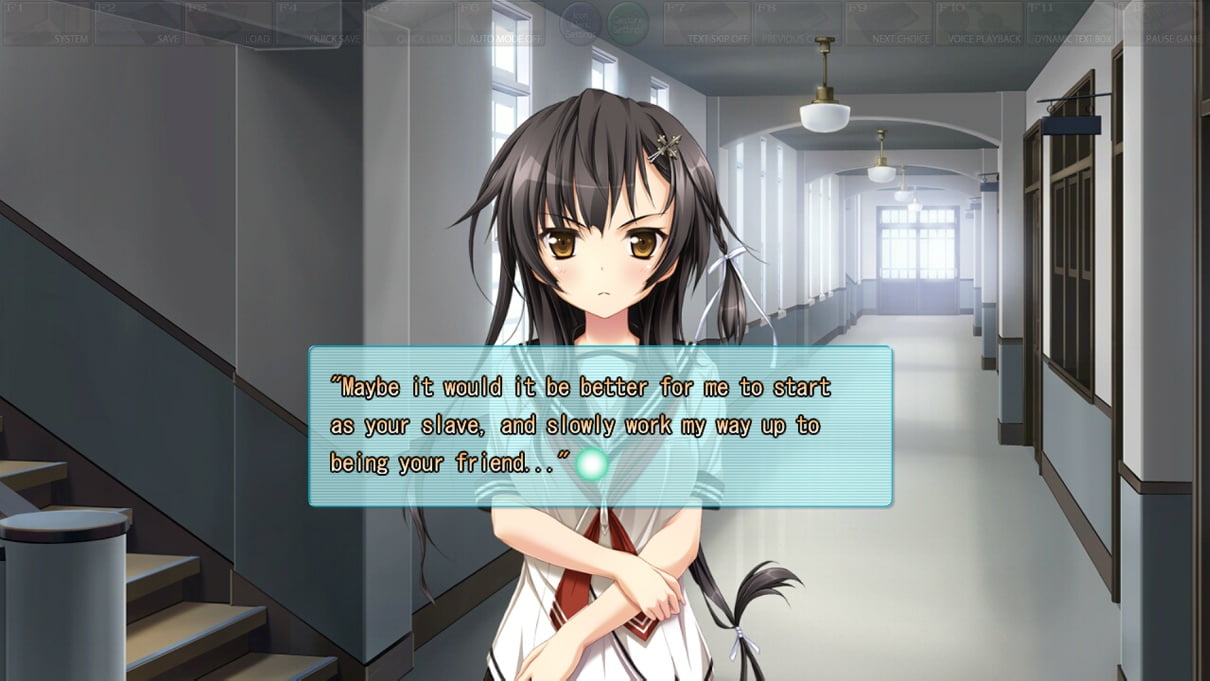
Friends and Family
While Kokoro and her mother Azuki are the first outsiders Makoto meets, the cast of characters quickly expands. Kokoro introduces him to her friend Minazuki Hotaru, while Makoto manages to befriend shy classmate Ashina Kyouko and token male character Asakawa Kouichi. It doesn’t take long for his past to catch up with him either in the form of Mana, his childhood friend and fiance from the village. Turns out she’s not thrilled about having been abandoned.
Kokoro is a deredere (lovestruck) type, described by others as a fairy tale princess, with a pure heart and a head in the clouds. Her kind and trusting nature are Makoto’s warm welcome to the outside world, and he quickly learns to treasure her in return. Kokoro’s story deals with holding on to the happiness that she and Azuki have built as a family. Kokoro worries about her mother running the cafe alone. And of course it doesn’t help that she harbors romantic feelings for her “brother” that she knows are wrong.
Kyouko suffers from an extreme lack of self-confidence, and her desperation not to be a burden to others leads her to isolate herself. She’s initially interested in Makoto because his bluntness is everything she’s not. The two become friends, despite her protestations that she’s unworthy, and she opens up to Makoto about her ability to see ghosts and spirits. Her story explores her past and how she might learn to balance others’ needs with her own.
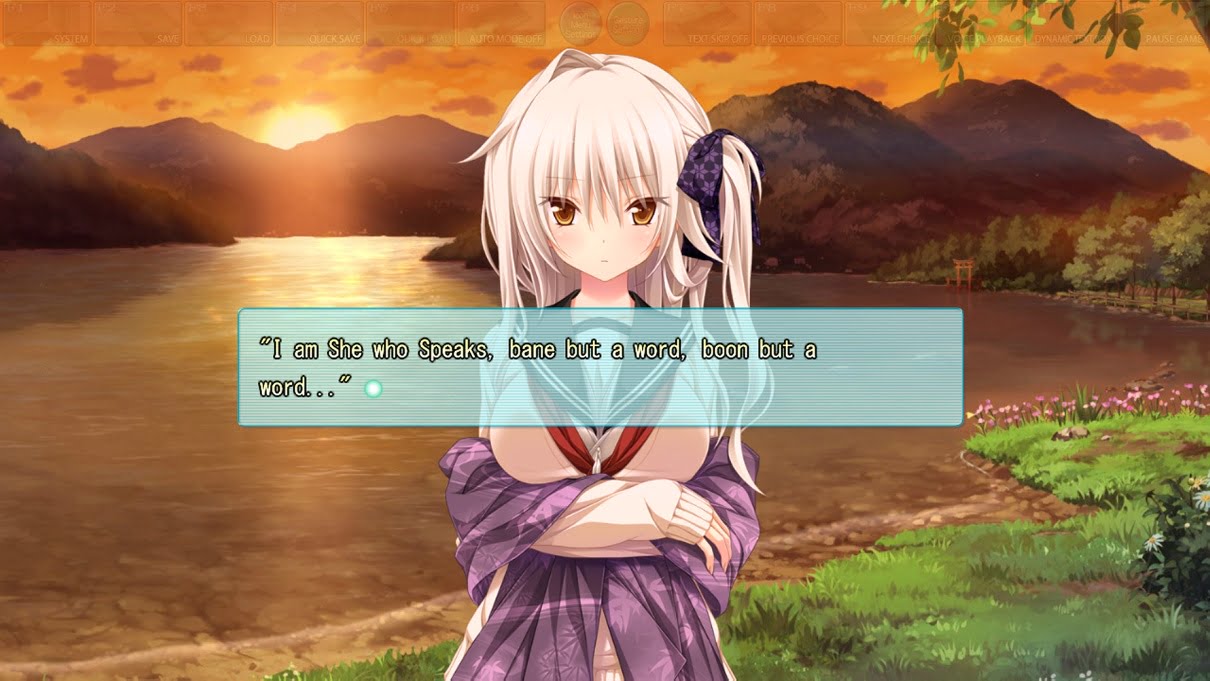
Mana is cat-like and incorrigible. As a powerful kotodama user, she has no trouble doing what she wants when she wants. She initially arrives to take Makoto back to his village, but perhaps out of softness toward him, allows him to stay for the moment. For being his fiance, she’s surprisingly permissive of his ambitions to have new experiences, including other girls. Underneath her cool exterior, Mana has her worries, and her story sees her and Makoto face up to their shared past.
Hotaru is a cheerful and quick-witted girl, but a bit of an oddball. Even more unusual, Makoto’s kotodama has no effect on her. Hotaru suggests an alternative. Gods can give commands; humans must trust one another. Though she clearly has mysteries of her own, Hotaru becomes something of a confidant for Makoto–a human who knows his secret. Hotaru proclaims kotodama is terrifying and asks Makoto for a promise: to use his powers to keep everyone, including himself, smiling.
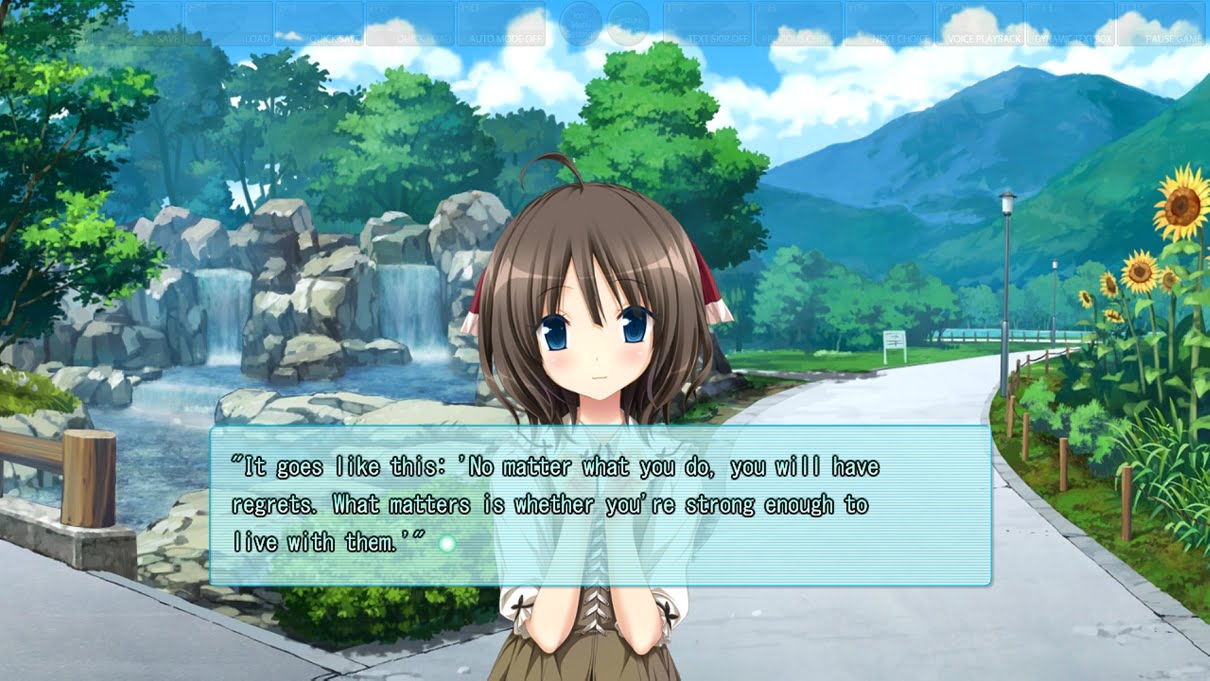
Speak Your Truth
Amatsutsumi organizes its routes in a ladder structure. Following the ladder to the end leads to Hotaru’s route, which is the main route of Amatsutsumi, with earlier branching points for Kokoro, Kyouko, and Mana in that order. Each heroine’s main dramatic conflict is explored in the portion of the ladder immediately preceding her branching point, so if you play through to Hotaru you’ll see them all. The routes proper are mostly fluff–dates, lovey-dovey time, sex scenes–with just a splash of drama and an ending for that couple.
Amatsutsumi exists for Hotaru’s route. The other heroines’ parts of the stories are important in that they help Makoto become the person he needs to be to face Hotaru’s secret. However, the romantic developments in their routes are more to give the player choice than an integral part of the story. It’s difficult to say anything about Hotaru’s route without spoilers, but I thought it was the highlight of Amatsutsumi and both its endings offer strong conclusions that resolve the themes and the nature of kotodama in interesting ways.
As for the others, I enjoyed Mana’s story and route because she has great chemistry with Makoto while I found Kokoro’s and Kyouko’s were less interesting, both in their narrative drama and the romantic developments. Your experience with these three will likely depend on whose personalities you find appealing. Fortunately, Amatsutsumi doesn’t enforce any route order, and you can skip those of any heroines you find dull. In fact, I would recommend it, since you still experience the main part of their story while traversing the ladder to the end.

Sexual Content
Amatsutsumi has a whopping 22 sex scenes in the uncensored version. The scenes are individually long, but are spaced throughout the story rather than all crammed into the heroine routes. Amatsutsumi puts a lot of effort into making them erotic too. The art is detailed (and without mosaic censorship) while the scenes cover a range of mild fetishes and scenarios. If you enjoy sex scenes in isolation, Amatsutsumi does not disappoint.
There are some downsides to the structure of Amatsutsumi’s sexual content though. For one, it’s impossible to reach any ending without Makoto bedding multiple heroines, something single heroine loyalists might not appreciate. And in order to fit all the content in, Amatsutsumi sometimes deploys sex scenes as narrative asides or at times that feel inappropriate to the tone of the story events.

However, the larger issue is that Amatsutsumi’s choice to make all four heroines sexual interests in the main ladder segments reverberates throughout its storytelling and characterization. Essentially, the sex scenes need scaffolding, and this is drawn from moege and harem anime tropes. Makoto is frequently distracted by perverted thoughts so as to firmly establish his lustful gaze. Meanwhile, every heroine is eager to throw herself at Makoto almost immediately after meeting him. And of course Makoto can have any and all of them with minimal consequences. I suppose this keeps Amatsutsumi from becoming too much about Makoto’s sexcapades, but has the side effect of making him come across as a horndog ready to jump in bed at a moment’s notice, living in a world that has traded its solemn aura of mystery for harem wish fulfillment.
There’s nothing wrong with sexual content, but in Amatsutsumi I often felt it fought with the narrative rather than complemented it. Makoto shines as a protagonist when he’s growing as a character in a story full of dramatic and heartfelt moments. It’s disappointing when his thoughtful nature evaporates into the usual dirty thoughts or when a sudden sex scene deflates the dramatic tension. I found Makoto the god on a journey to become human much more compelling than Makoto the pervert on a journey to get laid.

Art, Sound, and Extras
Amatsutsumi is visually stunning. Not only are there impressive technical touches like animated water and dynamic expressions for the lively character sprites, but the artistry is lovely. The event CGs make highly effective use of framing, color, and angles, and several are breathtaking. This level of quality and care extends to the lewd CGs too, which is nice given about half the CGs are lewd. Amatsutsumi is one of the most impressive visual novels I’ve read in terms of giving its characters distinctive bodies rather than simply pasting different heads and busts onto a single reused body.
I enjoyed the voice acting, from Kokoro’s sing-song cadence to Mana’s ice queen imperiousness. Hotaru in particular is a pleasure to listen to, her cadence playful and irregular like the song of a catbird. The music effectively sets the mood, from relaxed lounge music for a lazy day at the café to sweeping lines to accompany a dramatic moment. Meanwhile, sound effects like cicada cries help bring the summer season to life.
Extras include galleries for CGs and sex scenes, a music player, and a sprite posing tool. There are also a number of customization options. In addition to the usuals, Amatsutsumi allows you to set the text color for each character. I didn’t notice any significant errors or bugs. However, neither the song titles in the song gallery nor the chapter titles are translated. Normally, I wouldn’t be too bothered, but because language plays such an important role in Amatsutsumi it does feel like a loss.
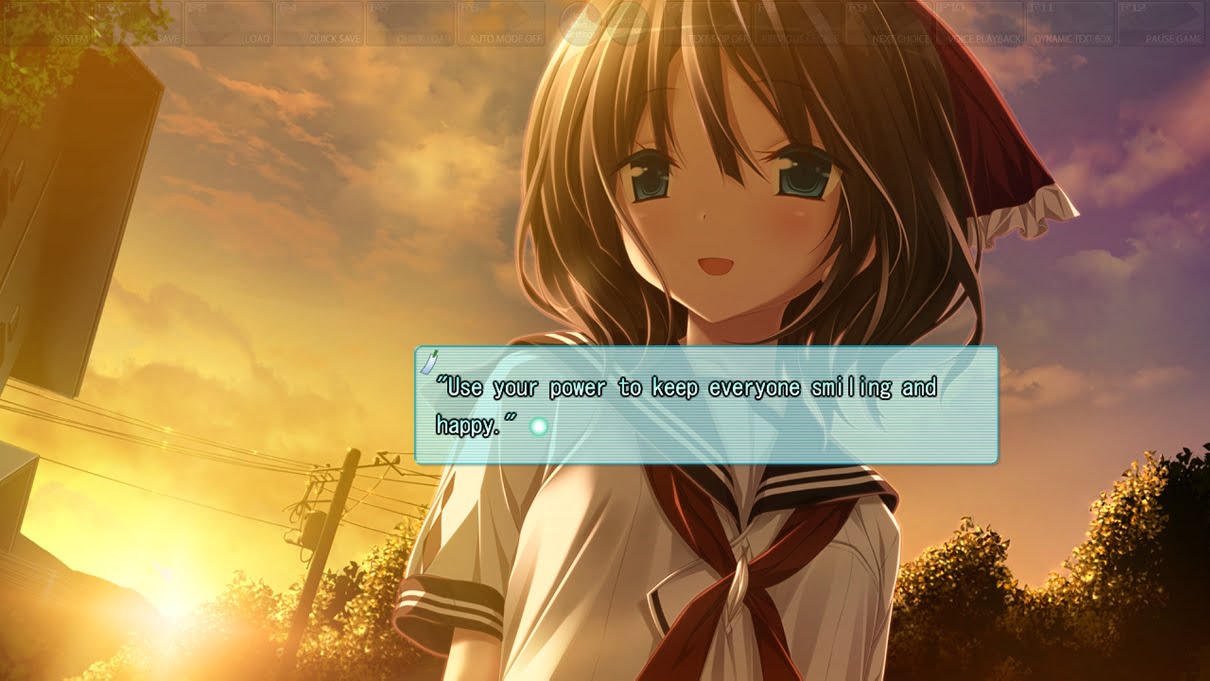
Verdict
Amatsutsumi stands on the strength of its main route. Depending on how you feel about the other heroines and sexual content the journey can be circuitous, but the story of Makoto and the kotodama is worth seeing to the end.
AMATSUTSUMI IS RECOMMENDED

If you are looking for another visual novel with mysterious powers, perhaps Hello Lady would be worth checking out. We have also covered a wide variety of visual novels both original to English and localized from Japanese, which you can check out here.
Many thanks go to the publisher Sekai Project for a review code for this title.
A veteran of Oregon Trail and Battletoads, Wes has been playing and talking about games for as long as he can remember. He’s down to try almost anything, and he especially enjoys games with gripping narrative experiences.

